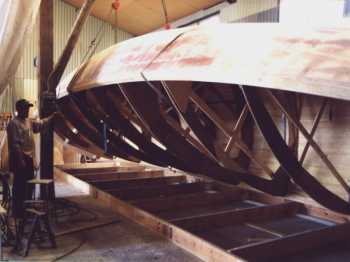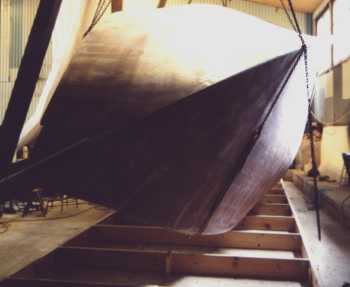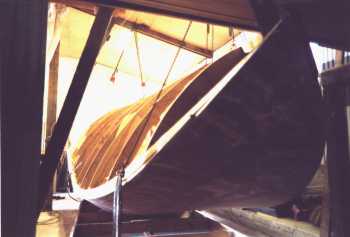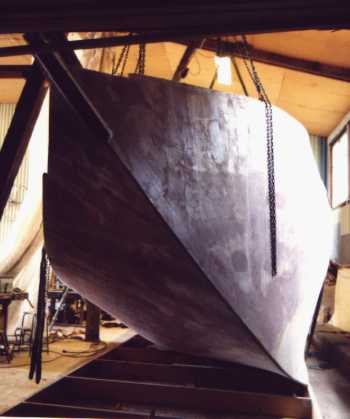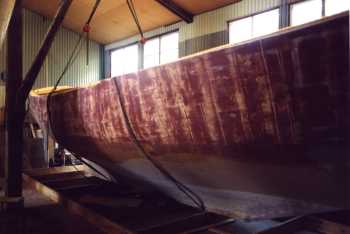2004-05-02
Navigation:
Turning the hull
|
After fairing the topsides with brown/red micro balloons, we turned the hull. It
would be easier to fair under the waterline when the hull is right side up. And
fairing there isn't as important, of course.
So... time for the big lift. We had to rotate the hull where it was, as we didn't have place to roll it over the ground.
Well. It wasn't that hard at all. The hull probably weights less than 1000 kilos even though the finished boat will come down to her water line at 9.2 tons. But that of course includes lead keel, deck, interior, rig, engine, crew and all the stores. But as you can see, even though the hull will be very strong with this construction method, it is quite light. In advertisements for new boats, crew and stores are often excluded. That makes the boats look fast, with a high sail area/displacement ratio, on paper. The seller then complains about sailors carrying too much stores. I wonder who is fooling who here. Back to the turning: As the hull was so light we only used three persons and four chain lifts to turn the hull. We could have done it with two persons and three chain lifts. |
